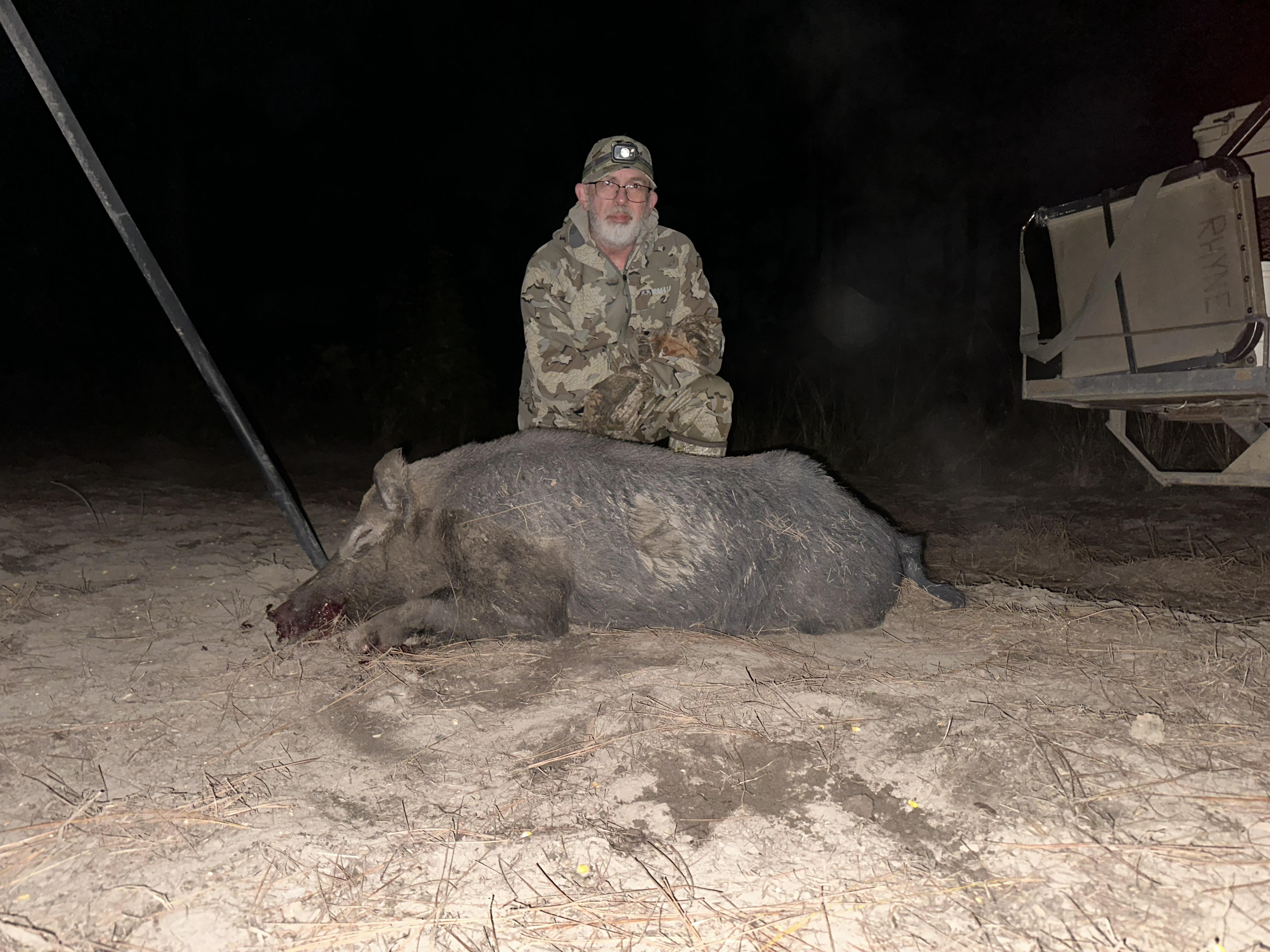Why was the Kentucky rifle such a success? Probably because here, for the first time, was a firearm that evolved in direct response to America’s needs. Rifles brought over from Europe were of little value in the American wilderness. Loading was a slow, difficult job. The noise of hammering a tight-fitting ball down the length of the barrel often scared off game or attracted attention at the wrong time. Construction was ugly and ungainly; trigger guards were bulky yet frail; sights were useless in dark forests or in any spot where accuracy was vital; calibers were large; and the rifles as a whole were heavy and unreliable. Little wonder that for many years the smoothbores reigned supreme.
[ … ]
No frontiersman wanted to carry a heavy weapon on his long treks in the wilderness. The weight was steadily reduced until the average Kentucky hunting rifle weighed between 9 and 10 pounds. (Those made for match shooting averaged about 19 pounds.) Similarly, using a large-caliber rifle meant that the lone pioneer had to carry a heavy load of bullets. So the caliber was reduced from the .65 and .70 common in Europe to about .45. The pound of lead that once yielded sixteen .70 bullets now gave forty-eight .45 balls — three times as many shots.
[ … ]
George Washington had learned the value of Kentucky riflemen in the French and Indian War. When the Revolution began, he urged the Continental Congress to put in a call for them. So it happens that the first troops raised by a central government on this continent were companies of straight-shooting backwoodsmen — and this might be called the beginning of the U. S. Army!
From the far fringes of the frontier the colorful, independent hunters flocked to their meeting places. One group of ninety-six men, recruited in Virginia by Daniel Morgan, marched 600 miles in 21 days to join the army facing the British at Cambridge, Mass. And some of these tough customers had walked 200 miles through the wilderness in order to enlist!
The bulk of the fighting in the Revolution was done with smoothbore muskets, so inaccurate that nineteen shots out of twenty would miss an 18-foot-square target at 350 yards. This performance was so poor that Benjamin Franklin urged the authorities to equip the Continental Army with bows and arrows.
Like every other improvement in arms, from the longbow to the atom bomb, the rifle was denounced as barbarous and uncivilized — by the side that didn’t have it. After Bunker Hill, the British tried to alibi their heavy losses by charging that the Americans used rifles with slit bullets that broke in four parts when fired. As a matter of fact, the frontier riflemen hadn’t arrived at the time of Bunker Hill; according to a writer of the time, the New England farmers who fought there were armed with muskets, mostly without bayonets. But he adds: “They are almost all marksmen, being accustomed to sporting of one kind or another from their youth.”
Soon, however, the men with the Kentuckys were pouring northward, amazing townspeople with their marksmanship as well as with their outlandish garb and swaggering manners. Newspapers were filled with stories of their feats — many of which obviously gained in the telling. From Lancaster, Pa., a townsman wrote of seeing a man take a 5 x 7-inch piece of board and hold it between his knees while his brother put eight bullets through it in succession from a distance of 60 yards. Another chap offered to shoot an apple off a man’s head at the same range, but the timid spectators declined to watch any such fool stunt.
After they joined the army at Cambridge, the backwoodsmen made life miserable for the British. Their specialty was picking off officers and sentries. Soon a Philadelphia printer was writing to a friend in London: “This province has raised 1,000 riflemen, the worst of whom will put a ball into a man’s head at the distance of 150 or 200 yards. Therefore advise your officers who shall hereafter come out to America to settle their affairs in England before their departure.”
British General Howe is said to have offered a large reward for the capture of a Kentucky rifleman. When one finally was taken, Howe sent him to London to show what the redcoats were up against. A few demonstrations of his skill brought British enlistments practically to zero!
It sounds like the assault weapon of the revolutionary war. The British didn’t want the colonists to have rifled bores any more than your government wants you to have the weapons they have.






